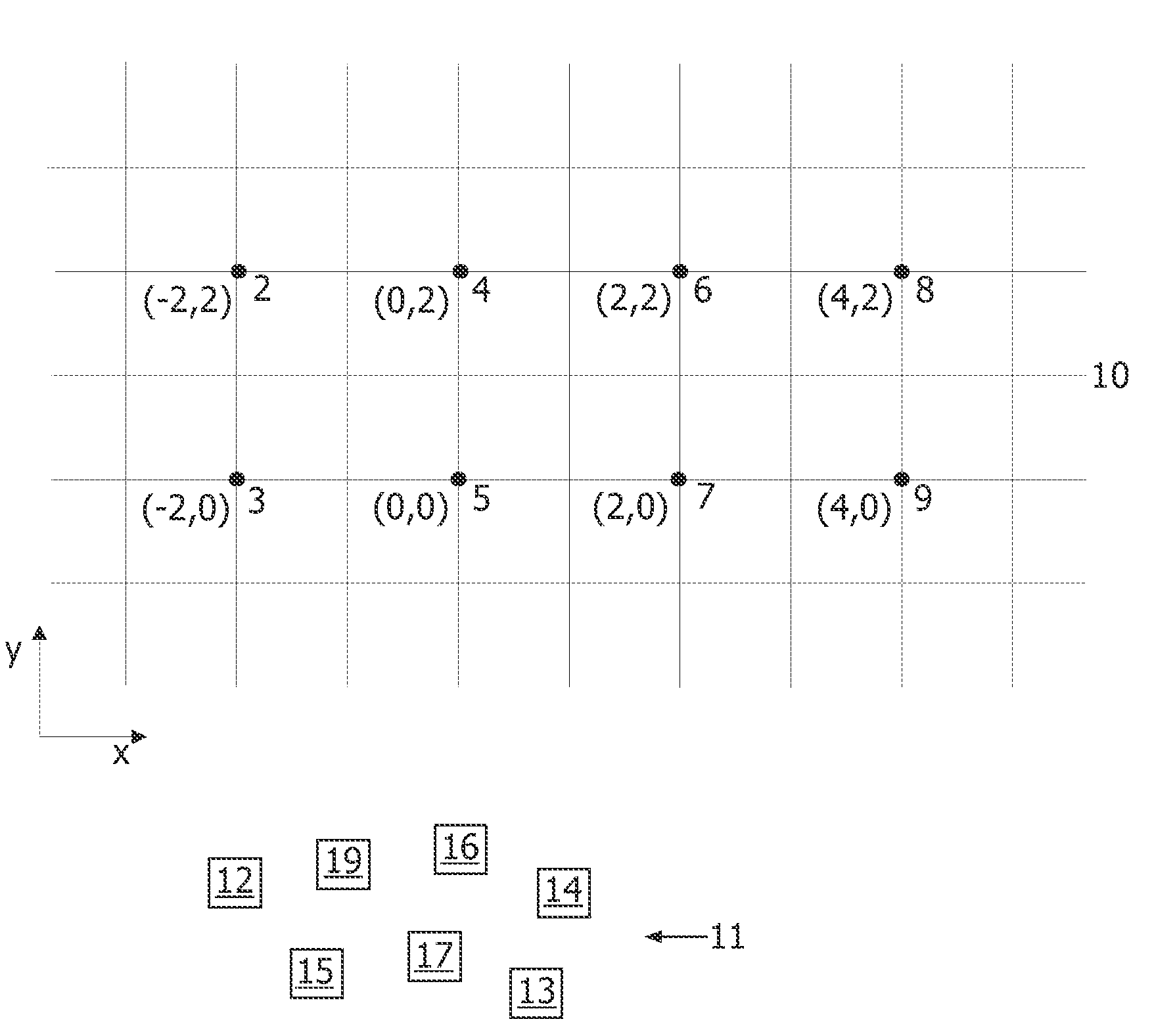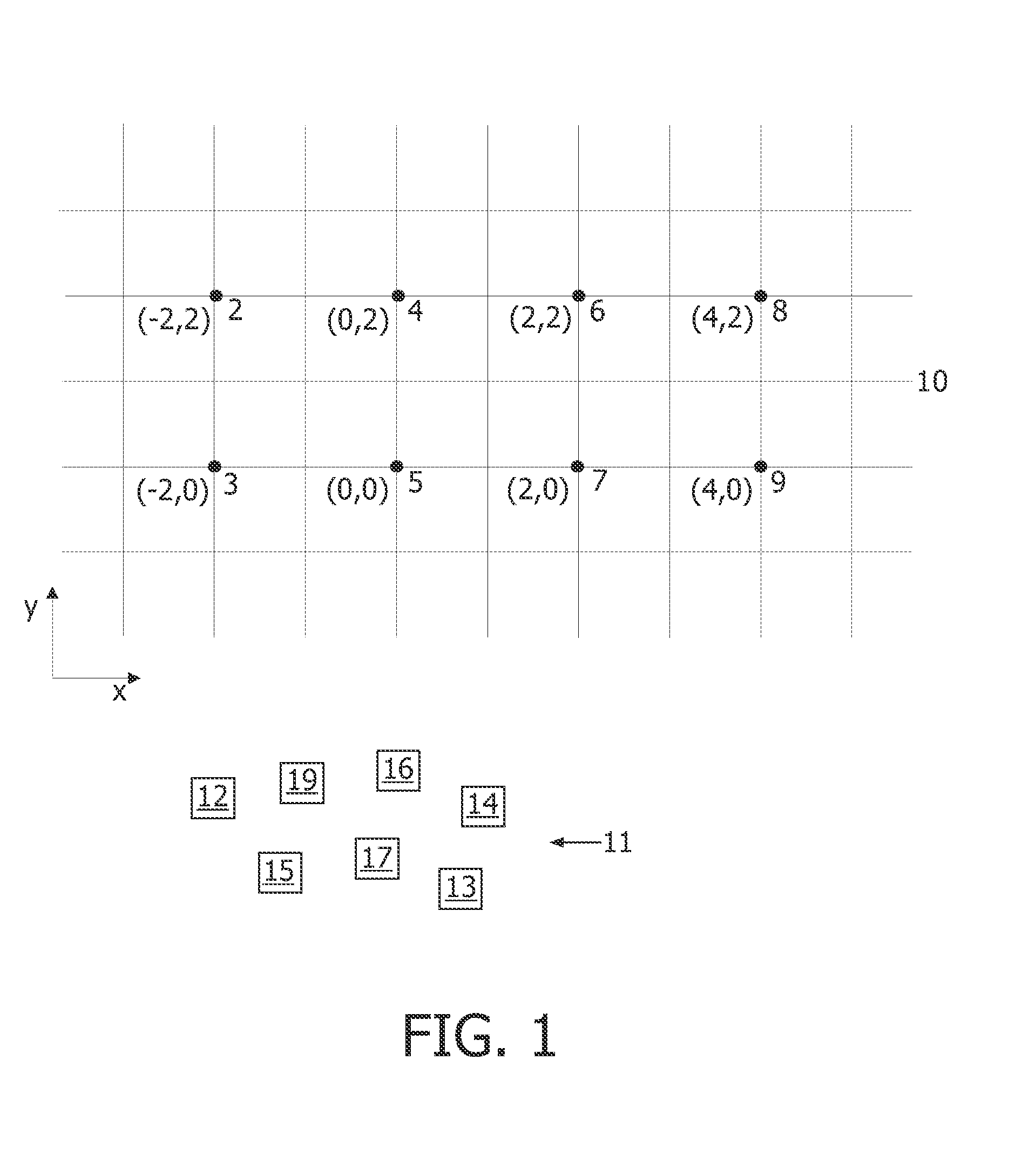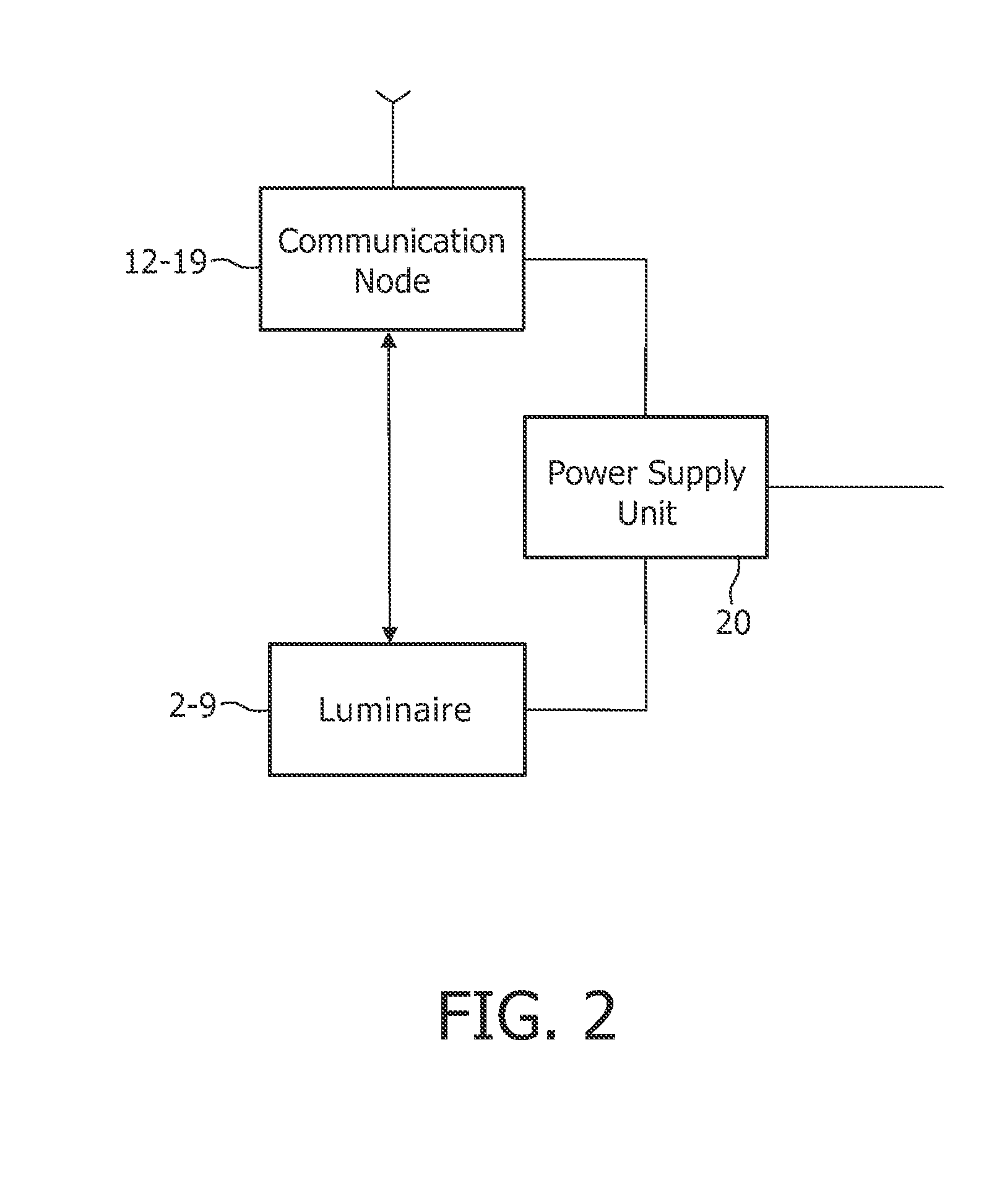Use of decision trees for automatic commissioning
a decision tree and automatic commissioning technology, applied in the direction of digital computer details, data switching networks, instruments, etc., can solve the problems of unfavorable automatic commissioning, unfavorable automatic commissioning, and different types of range measuremen
- Summary
- Abstract
- Description
- Claims
- Application Information
AI Technical Summary
Problems solved by technology
Method used
Image
Examples
Embodiment Construction
[0044]Referring to FIG. 1, a section of a wireless lighting array 1 comprises electrically driven luminaires 2-9, which are arranged on a lattice 10. The intersections of the lattice 10 define an arbitrary x-y coordinate scale. However, in another embodiment of the invention, the luminaires 2-9 may be arranged in x-y-z space. The luminaires are adapted to communicate with one another through a wireless communication network 11, which comprises communication nodes 12-19. Each of the communication nodes 12-19 comprises, for example, a ZigBee-like radio module, and is associated with one of the electrically driven luminaires 2-9.
[0045]Referring to FIG. 2, the hardware present at each luminaire position comprises a power supply unit 20, a wireless communication node 12-19 and a luminaire 2-9. The power supply unit 20 is adapted to provide electrical power to the communication node 12-19 and to the luminaire 2-9. The power supply unit 20 may be connected to a mains power supply and may c...
PUM
 Login to View More
Login to View More Abstract
Description
Claims
Application Information
 Login to View More
Login to View More - R&D
- Intellectual Property
- Life Sciences
- Materials
- Tech Scout
- Unparalleled Data Quality
- Higher Quality Content
- 60% Fewer Hallucinations
Browse by: Latest US Patents, China's latest patents, Technical Efficacy Thesaurus, Application Domain, Technology Topic, Popular Technical Reports.
© 2025 PatSnap. All rights reserved.Legal|Privacy policy|Modern Slavery Act Transparency Statement|Sitemap|About US| Contact US: help@patsnap.com



